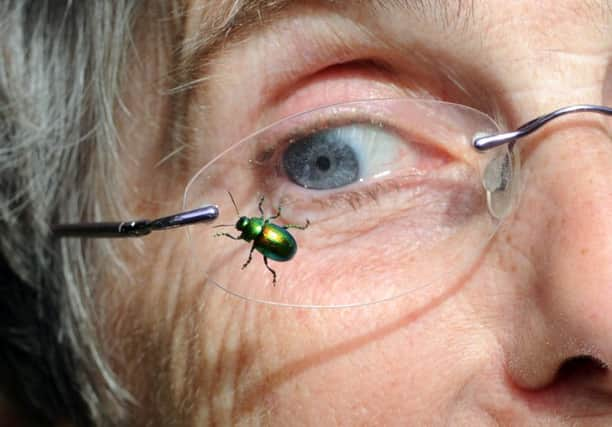Rare beetle given a glimmer of light


Come the Spring, the “jewel of York” can be seen basking on leaves of its favourite tansy plant along a 30-km stretch of the River Ouse.
The tiny, shiny tansy beetle - only found around York and at Woodwalton Fen in East Anglia - has been the subject of huge efforts in the past few years and now its numbers are on the increase - from 24,000 last year to 40,000 at the last count.
Advertisement
Hide AdAdvertisement
Hide AdIn May 2015 the Heritage Lottery Fund awarded £56,000 to the Buglife charity for an 18-month project to raise awareness and take practical steps to help the endangered beetle thrive.
Over 100 people have been involved in the conservation effort, everyone from schoolchildren, to Scouts and Beavers and families. Some people have grown tansy, the beetle’s favourite food plant, at home and planted it out in Spring, with others have cleared fast-growing Himalayan balsam from the riverbanks, to help the sun-loving plant thrive.
The project finishes at the end of this month, but three volunteer tansy beetle co-ordinators will continue the good work from January, with the help of many others. Julia Smith, outgoing tansy beetle conservation officer, said it was difficult to say whether their efforts were responsible for the increase in numbers.
The beetles don’t tend to fly, so their spread is restricted. If a clump of tansy disappears they have to walk to the next one. She said: “We’ve cleared out Himalayan balsam and we have been trying to extend existing patches.
Advertisement
Hide AdAdvertisement
Hide Ad“Another factor is summer flooding. This time of year they are underground, but come June and July the larvae are generally feeding on top of the plants and summer flooding washes them off. We haven’t had that for the last couple of years. To my mind that’s a key one that has allowed numbers to grow.”
She added: “We’ve had fantastic support and it’s been a brilliant project. There’s been a lot of involvement and enthusiasm from the wider community and it would be a shame to see it go. So we are lucky to have the new volunteer tansy beetle co-ordinators”
One of the best places to spot a beetle is in York Museum Gardens, where there’s a designated patch of tansy. “If you visit from the end of April to May, they will be there basking on the leaves, mating and feeding on vegetation,” said Andrew Cutts, Urban Buzz project conservation officer. Its lack of a sting is part of the beetle’s appeal - which was such that it is said Victorians used their wing-cases like sequins. “If you look at them in full sunlight they shimmer,” said Andrew. “The height of the plants means it is something that children can stand and observe It has no defences in terms of a sting, so it is seen as something non-threatening.”
A new interpretation board has gone up at Clifton Bridge on the Bootham side of the river, where 1st Clifton Sea Scouts Cubs and Beavers planted tansy earlier this year. York MP Rachel Maskell - a tansy beetle champion - thanked Buglife, the Cubs and Beavers “and everybody involved in the work to conserve this important and rare habitat, just outside of our city centre.”